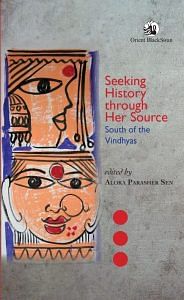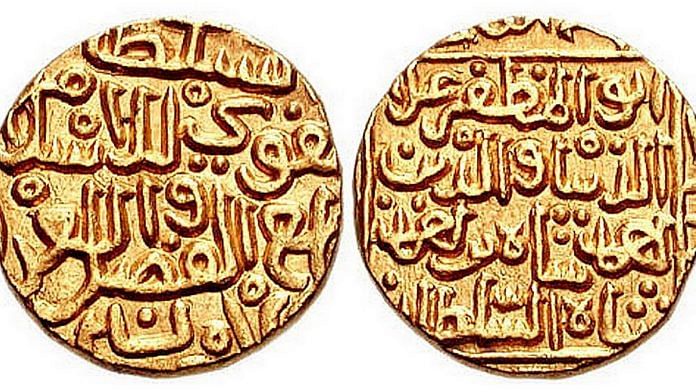We examine how local coins can enable an understanding of the social formation of the early Deccan. Local coins are those coins that were issued by local chieftains, who bore names or titles such as Gobhada, Samagopa, Mahāsenāpati, Mahātalavara, Mahārathi, Sada, Kura, and so on, and ruled several localities of the early Deccan from the middle of the second century BCE to the third century CE. These coins were some of the first on the subcontinent to have names and legends of local rulers inscribed on them, which provide details about these rulers that are not known to us from any other source of information. These rulers were distinct from the well-known kings of the Sātavāhana dynasty.
It is critical to assess the role these chiefs played prior to Sātavāhana rule, while coexisting with their rule and, in some areas, while succeeding them. In each of these phases, the nature of the local polity reflects different trends. We identify these coins as an unconventional source that can be used to reinterpret the polity of several localities of the Deccan, and their interrelation with the larger Sātavāhana empire. This enables us to gain a deeper understanding of the historical landscape, which is not usually discussed in dominant political narratives of the region.
Scholars who have so far studied these local coins as a source material have done so to either trace their individual political identities, or to show how they can be used as a corroborative source while writing the history of the region. Numismatic data of this kind which has been closely looked at till date only offers us scholarly insights regarding who these coins can be attributed to, and to some extent, helps us ascertain the chronologies of these ruling groups. Some of these local coins were found along with other excavated material at different sites across the Deccan. It has been observed that usually the minting of these coins was not done under royal patronage, and therefore we have numerous instances where persons occupying a subordinate position have also issued and minted coins in their names. Therefore, these coins are unique because the long period of their existence has not been influenced by the changing trajectories of power at the pan-regional level, and this raises fundamental questions that necessitate a re-examination of the nature of the polity in these parts.
Also read: South India challenges the notions of medieval Islam—lessons from Deccan history
Geographers, archaeologists, and historians have hitherto defined the Deccan in terms of its sub-regional spaces and their specific geo-cultural zones, based on their material and physical features. The geographical roots of diversity in the Deccan provide essential insights into how these sub-regions have evolved over historical time. Emphasising the diverse physiographic features of the Deccan, Parasher Sen has highlighted the material particularities of its four distinct sub-regions, namely the southern Deccan (constituting most of present-day Karnataka region, followed by the upper areas of the Krishna-Tungabhadra valley and the Mysore plateau), the eastern Deccan (roughly comprised of present-day Andhra Pradesh state with fertile coastal plain areas), the central Deccan (marked by present-day Telangana state and its hilly plateau region), and the western Deccan (represented by the state of Maharashtra and its hilly ghāts alongside strategic passes).
The above sub-regional classification of the Deccan has been adopted in this study as we consider it a convenient way to describe the distinct characteristics of the various coins that were found in different localities. It most significantly enables us to highlight difference and particularity that can further be assessed to discuss the nature of the polity that came up in these diverse sub-regions of the Deccan.
Explanations of the early historical period in the Ganges plains have given us chronological parameters that do not neatly apply to other regions of the subcontinent. Thus, there is a need to move away from an epicentre located in the Ganges valley and recognise that these historico-cultural changes have always remained uneven all over the subcontinent, across different spatial units. With this recognition in mind, we observe that the spatial and temporal parameters of the Deccan throw up different definitions of the early historic phase in this region. B. D. Chattopadhyaya has coherently articulated one such definition while elaborating on the transition to the early historic period in the Deccan. He writes:
The change cannot be viewed either in terms of a gradual evolution from the megalithic culture or in terms of a wholesale north Indian impact because in early historical phase, the Deccan has absorbed some elements which are unique and non-indigenous to both north and south. To understand the historical spatial composition of the Deccan, it is important to locate the nuclear areas of the Sātavāhanas and to examine how they were related to the ‘localities’ of the pre-Sātavāhana phase.
This understanding of the early historical period in the Deccan is apt for the subject matter that we propose to highlight in this chapter. It enables us to focus on how the criteria of the ‘historic’ emerges in the different ‘localities’ of the Deccan, which in any case were part of the specific geographic sub-regions.
Also read: Mongols speaking Malayalam – What a sunken ship says about South India & China’s medieval ties
The criteria used to understand the transition to the early historic phase in India usually includes such common indices like the emergence of urban centres, coinage, and scripts for writing, alongside other essential material changes signified by pottery, metal technology, and the like. In the Deccan, excavated material pertaining to the Megalithic and the early historic phases are not always found to be clearly distinct from each other. They have been found to coexist at places, and often overlap. In specific sub-regions and localities, this lack of clarity often leads to problems in dating these two cultural phases—the Megalithic and the early historical cultures—and the material remains of these phases are then placed during the same periodical time frame. The issue is further complicated when the early historic phases are called ‘Sātavāhana’. It is noticed that in some sub-regions of the Deccan, material remains like the coins that we propose to highlight in this chapter have been found at stratigraphic levels that pre-date the rise of the Sātavāhanas in the Deccan. The question that arises then is whether the existence of these coins should be located instead in the Megalithic period, which is generally understood as a pre-urban phase of human evolution.
This process of transition, and the ambiguities that the material evidence throws up, have earlier been articulated by Sudarshan Seneviratne. Within his broader concerns to understand the processes of state-formation in Andhra and Kalinga, Seneviratne has used the theory of ‘secondary state formation’ to formulate the processes that led to the transition from the Megalithic to the early historic phase. He emphasised first on the internal processes of change emanating from the Megalithic society, and then on the external influences, primarily defined by the Mauryan presence in some parts of the Deccan (as evidenced by the presence of the Aśokan inscriptions) that led to the formation of the early state in these regions.
Seneviratne writes: ‘The process of secondary state formation in Kalinga and Andhra was an outcome when the autochthonous forces combined with the consequences resulting from a period of political subordination to the “metropolitan states” of the Mauryas and the Sātavāhanas’. This analysis points to a critical feature, that is, the creation of a ‘ranked’ society’, already present during the Megalithic phases, which was a precursor to the rise of a stratified class-based state society when a ruling class with control over the means of production emerged. Thus, this explanation of transition has helped us to understand the nature of power visible in local polities even before the rise of the Sātavāhanas.
 This excerpt from ‘Seeking History Through Her Source: South of the Vindhyas’, edited by Aloka Parasher Sen has been published with permission from Orient Blackswan.
This excerpt from ‘Seeking History Through Her Source: South of the Vindhyas’, edited by Aloka Parasher Sen has been published with permission from Orient Blackswan.



